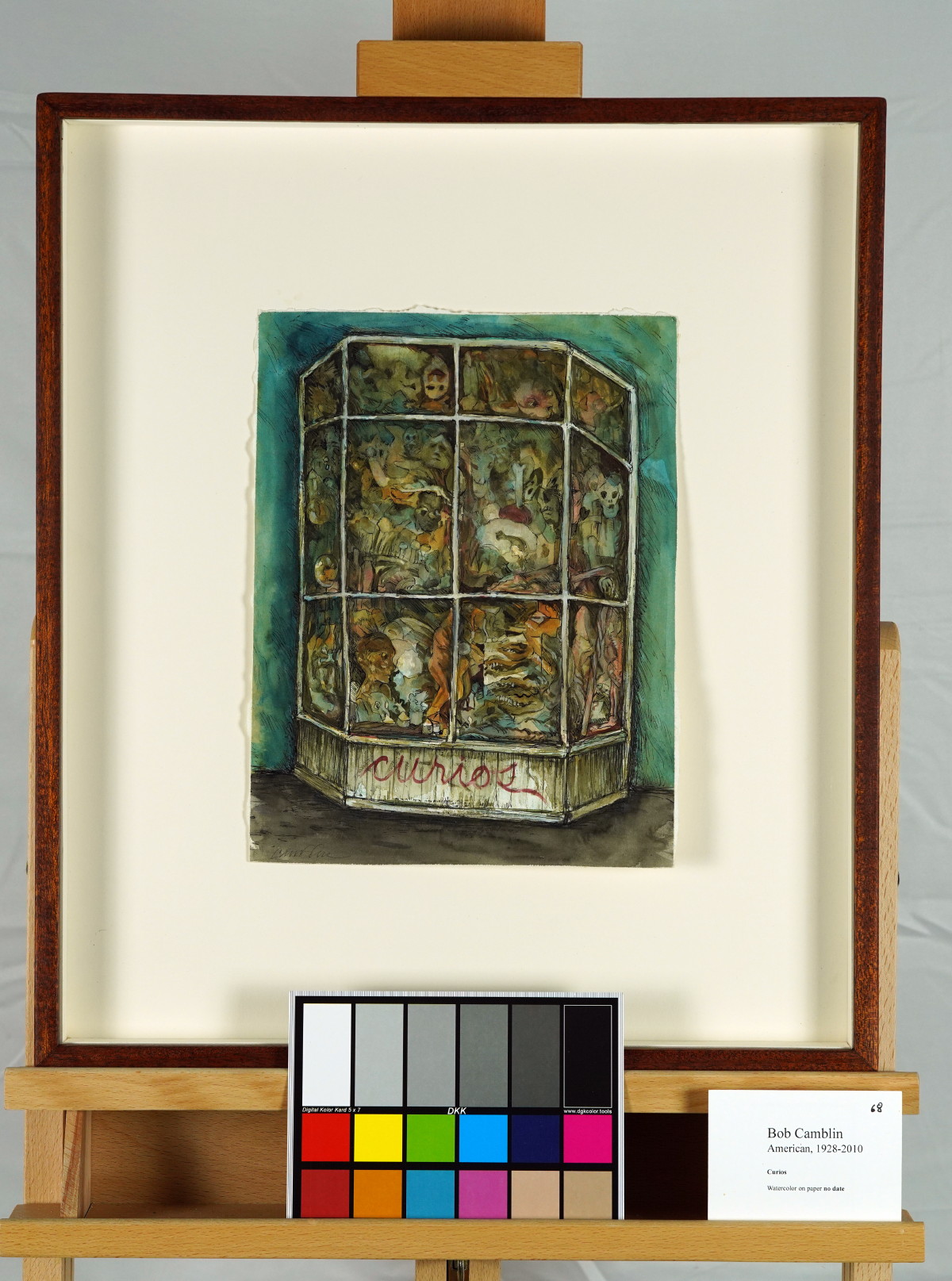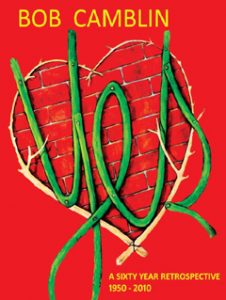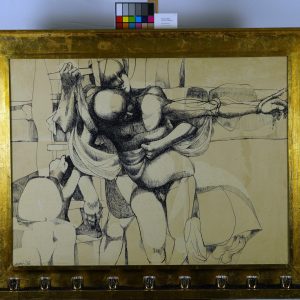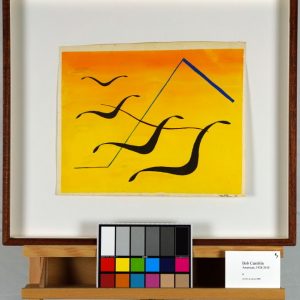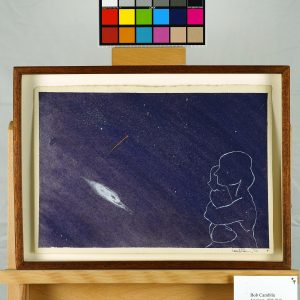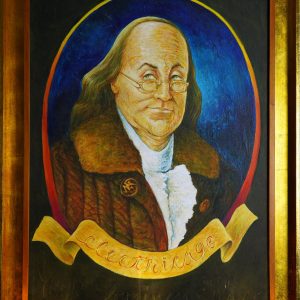Description
Curios, no dateWatercolor on Arches
Signed
11.5 x 9 in. (image)
20.25 x 17.75 (frame)
original, includes certificate of authenticity from ArtTrust
The watercolor “Curios” portrays a display case filled with an assortment of objects and artifacts, evoking the look of a “cabinet of curiosities.” These objects appear cluttered and layered, some resembling animal skulls, figurines, and masks, while others are less distinguishable, lending an air of mystery. The word “Curios” is written in red on the display’s base. The color scheme is muted, primarily with earthy tones and a touch of red, creating an aged or antique effect.
From a Zen perspective, this artwork could represent the accumulation of experiences, thoughts, and material possessions that clutter the mind. The chaotic arrangement inside the display symbolizes how attachments and distractions accumulate over time, obstructing a clear and peaceful state of mind. In Zen practice, simplicity and emptiness are often emphasized as means to achieve enlightenment, suggesting that the cabinet’s fullness may signify the need to let go of mental “clutter” to attain inner clarity.
In the context of the I Ching, this scene could relate to Hexagram 41 (Sun/Decrease), which emphasizes the idea of simplifying life and letting go of excess. The overabundance of items in the cabinet contrasts with the principle of reducing distractions to cultivate focus and harmony. By removing what is unnecessary, one can restore balance, much like how the hexagram advocates for subtraction as a form of addition in one’s spiritual path.
Combining these interpretations, the artwork becomes a metaphor for the complexities and distractions present in the modern world, where material accumulation is often mistaken for meaning. The display case acts as a mirror reflecting the human tendency to hold onto memories, objects, and identities, thereby complicating one’s journey towards simplicity and mindfulness. Through Zen principles and I Ching wisdom, the artwork encourages viewers to identify and release unnecessary attachments.
The painting’s style evokes elements of surrealism and expressionism, with a loose and fluid execution. The idea of a “cabinet of curiosities” dates back to the Renaissance when collectors displayed exotic and rare items to illustrate their knowledge of the world. This piece modernizes that concept by imbuing the collected items with ambiguity and symbolic meaning rather than literal representation. The composition suggests an awareness of historical traditions in art, while simultaneously critiquing materialism and exploring psychological depth
*Shipping cost will vary, please inquire at sales@camblingallery.com before purchasing.
Currently ships from Oregon, USA
Member of artnet? Apply for a discount! Inquire about intergallery and permanent loans for museums.
“Curios” was featured in his Yes Retrospective
Reproductions of this drawing are available in multiple sizes!
Click here to use our high-resolution viewer!
This artwork is available with a non-fungible token to ensure traceability and transparency of provenance.
The royalty factor – Unlike traditional artworks, such as paintings, mosaics, statues, and the like, NFTs can be programmed to provide royalties to you every time the painting (and token) is sold and resold – for eternity. That mind-bending Camblin you sold could be worth millions one day and provide income for your great-great-great grandkids!
Anti-forgery – The central idea underpinning NFTs is that they are built on the blockchain, which is meant to offer advanced security. Think of it like an un-erasable and un-avoidable copyright.
Easy authentication – Another compelling aspect of NFT art and NFTs in general is the ability to quickly and easily authenticate items, as the record of ownership is scrupulously kept on the blockchain.
